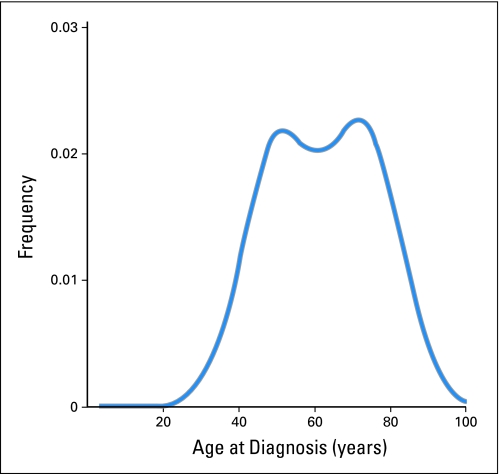Fig 1.
Bimodal age distribution at diagnosis for invasive female breast cancer cases (n = 94,813) in the National Cancer Institute's Surveillance, Epidemiology, and End Results Program during the years 1994 through 1997.16 Kernel density estimation was used to produce smoothed age distributions at diagnosis (or density plots) in single years.17 The kernel smoother estimated the underlying probability density function for breast cancer incidence by age at diagnosis in single years. The area under the curve represented 100% of the patients with breast cancer. Early- and late-onset modes were observed near ages 50 and 70 years, respectively. Although the relative distributions of the early- and late-onset breast cancer populations have fluctuated over time (likely due to complex interactions between age-related biologic factors and screening and/or birth-cohort phenomena), the modal ages of 50 and 70 years have been robust across molecular portraits, demographic and tumor characteristics.10,15,18

